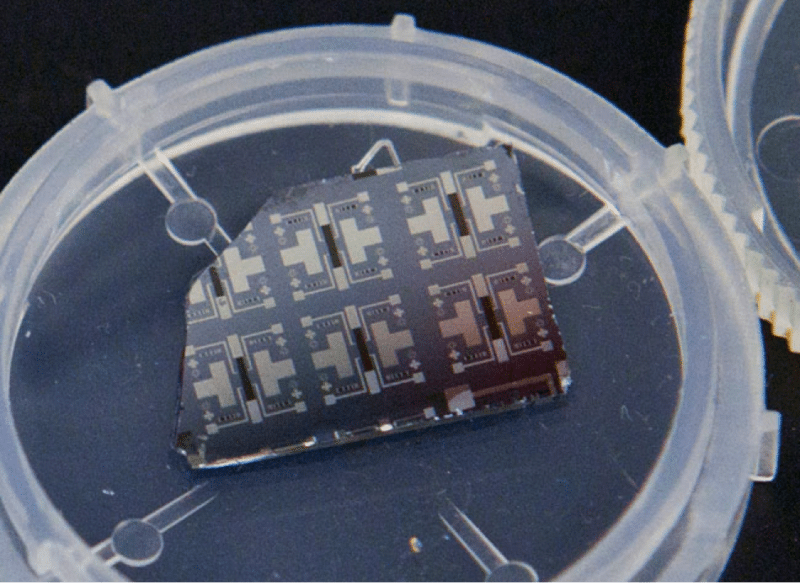It is a well-known fact that the highly remarkable supercomputers are power-hungry and staggeringly inefficient machines. In the meantime, our brains consist of about 86 billion neurons that are connected by synapses that not only establish myriad logic circuits, but also adapt to stimuli continuously strengthening few connections while weakening others. We call this process learning and it enables highly efficient and rapid computational processes. Material scientists At SEAS (Harvard School of Engineering and Applied Sciences) have now developed a new kind of transistor that mimics the synapse’s behavior. A synapse is defined as a junction between 2 nerve cells that consists of a minute gap. The impulses pass across this gap by the diffusion of a neurotransmitter. In a circuit, the synaptic transistor modulates the flow of information along with physically adapting to changing signals.

The synaptic transistor can mark the emergence of a new type of artificial intelligence(one embedded in the very architecture of a computer but not in smart algorithms) by exploiting the modern materials’ unusual properties.
Shriram Ramanathan, associate professor, materials science, Harvard SEAS, says, “Nowadays, there is an extraordinary interest in developing energy-efficient electronics. Historically, the major focus of people had been on speed but with speed comes the dissipation of power. With electronics becoming highly ubiquitous and powerful, you could have a large impact by decreasing the amount of energy they consume.”
For all of its magnificent computing power, the human mind runs on around twenty watts of energy (lesser than a household light bulb), so it provides a natural model for engineers.
In a human brain, transistor is analogous to a synapse. Each time a neuron instigates an action and the other neuron retaliates, the strength of their connection is increased by the synapse between them. The strength of a synaptic connection depends on how fast the neurons spike each time. The Synapse memorizes the action between the neurons.
A system that integrates millions of neuron terminals and tiny synaptic transistors can take the parallel computing into a whole new era of high and ultra-efficient performance.
In a biological synapse, while receptors and calcium ions effect a change, the artificial version attains the same plasticity with oxygen ions. These ions slip in and out of crystal lattice of samarium nickelate thin film when a voltage is applied. This thin film acts as the synapse channel between two “dendrite” and “axon” terminals. In the nickelate, the varying concentration of ions lowers or rises its conductance. This implies, the capability of nickelate to carry information on an electrical current. The strength of the connection is based on time delay in the electrical signal just as in a natural synapse.
The synaptic transistor consists of a nickelate semiconductor adjacent to a tiny pocket of ionic liquid and sandwiched between 2 platinum electrodes. The time delay is converted into a magnitude of voltage by an external circuit multiplexer. This voltage is applied to the ionic liquid generating an electric field that either removes the ions or drives them into the nickelate. The whole device with a length of few hundred microns is embedded in a silicon chip.
When compared with the traditional silicon transistors, the synaptic transistor provides several immediate advantages. It is not restricted to the binary system of zeros and ones.
As the material composition changes, this system alters its conductance gradually. Using traditional circuit technology like CMOS would be rather challenging to imitate a synapse as the real biological synapses consist of an unlimited number of possible states – not just ‘on’ and ‘off.’
Non-volatile memory is another advantage that is offered by a synaptic transistor. Non-volatile memory indicates that the device remembers its state even when the power is interrupted.
Besides, the new transistor is essentially energy efficient. The correlated electron systems is an unusual class of materials to which the nickelate belongs. The correlated electron systems can undergo a metal-insulator transition. The material’s conductance changes suddenly when exposed to an external field – at a certain temperature.
This material’s extreme sensitivity is highly exploited. A very small excitation enables you to acquire a large signal, so the input energy needed to drive this switching is very small. For energy efficiency, this could translate into a large boost. For seamless integration into the present silicon-based systems, the nickelate system is positioned correctly.
The big advantage with this kind of device is that the ‘learning’ behavior is more or less temperature insensitive. We can operate this device anywhere within the temperatures starting from the room temperature to almost 160 degrees celsius.>As of now, the limitations are related to the device’s size that affects its speed and the challenges arising from synthesizing a material system that is relatively unexplored. All that has to be done is restraining the liquid and placing the gate electrode nearer to it. At SEAS, the limits and possibilities are being investigated for this ultimate fluidic transistor.
In order to synthesize these new kind of materials, a new instrumentation has to be developed. Once you are able to do this, you can actually have an entirely new material system whose properties are not virtually explored. Working with this kind of materials can be very exciting as not much is known about them and you will be having an opportunity to gain knowledge from scratch.
Feel Interested! Read more tech focus articles now.






